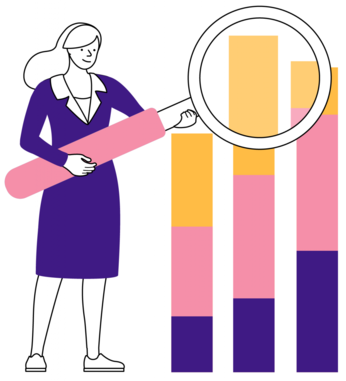Tourism Survey
What kind of survey is it?
The Tourism Survey provides an overview of travelling of Estonian residents: the number of domestic and outbound overnights trips, purposes and duration of trips, travel arrangements, expenses and the most popular destinations.
Who commissions the survey?
The survey is commissioned by the Ministry of Economic Affairs and Communications. The data are also used by Eesti Pank (the central bank of Estonia), Enterprise Estonia (EIS), and Eurostat.
How often is the survey conducted?
The survey is conducted monthly throughout the year.Data is published quarterly and annually.
Why are the data needed?
The survey data are used to analyse trips and assess the situation of the tourism sector. Tourism plays an important role in the country's economy and employment, as well as in socio-cultural integration. Collecting data on trips, tourists, travel expenditure, and the economic benefits of tourism is necessary to strengthen national competitiveness.
The survey data are comparable with those of tourism surveys carried out at the same time in other EU countries.
How are the participants selected?
The tourism survey sample for one month is drawn up randomly. The tourism survey sample is drawn up based on the population statistical register and contact details are obtained from the population register. The name and address of the person interviewed is known only to the interviewer and interviewers supervisor. The data collected are used in an aggregated form, no individual data are examined. Statistics Estonia ensures the protection of all respondents' data in accordance with the Official Statistics Act and the Personal Data Protection Act.
Participation in the Tourism Survey is voluntary. Each person's circumstances and life journey are unique. Therefore, no one else can replace a person in the survey. A person has the right to refuse to participate in the survey, but in this case, a piece of the whole picture is lost. Participation in the survey is necessary so that the state can rely on truthful and reliable information when making decisions that affect us all.
How are the data collected?
Before the survey starts, a notification is sent to all the people in the sample, explaining the purpose of the survey and how they will be contacted. The notification is sent to the sample person at the email address indicated in the Population Register. If no email address is available, a letter is sent by post to the address in the Population Register.
In this survey, data are collected through
- an online questionnaire
- a phone interview
For best service, the survey interview call is recorded with the consent of the respondent.
The interviewer will make a maximum of 10 contact attempts to reach the person selected for the sample.
How are the participants thanked for their contribution?
Two €50 gift vouchers are drawn among all respondents every quarter.
The sample person can consent to participate in the prize draw when filling in the questionnaire.
How can I make sure that it is a survey by Statistics Estonia?
The surveys conducted by Statistics Estonia can be found in the survey schedule on our website. Online questionnaires can be completed on Statistics Estonia’s website at https://estat.stat.ee. Phone interviews are conducted by specially trained interviewers. The names and phone numbers of Statistics Estonia’s interviewers can be checked on our website. If you have any questions, please contact our customer support by phone at +372 625 9300 or by email at klienditugi [at] stat.ee (klienditugi[at]stat[dot]ee).
Where are the results published?
The results of the Tourism Survey are published in the statistical database under the heading Travelling of Estonian residents. The data are also available in the dedicated section on tourism, accommodation and food service and on the dashboard under the domain Travelling of Estonian residents. When new annual information is published, a news item is released.
| Total | Professional, business | Holidays, leisure and recreation | Visits to friends and relatives | Other | |
|---|---|---|---|---|---|
| 2011 | 1,054.2 | 232.3 | 457.8 | 359.6 | .. |
| 2012 | 1,146.8 | 236.9 | 574.7 | 312.4 | 22.8 |
| 2013 | 1,165.8 | 272.4 | 652.4 | 233.4 | .. |
| 2014 | 1,425.5 | 395.6 | 701.1 | 311.2 | 17.6 |
| 2015 | 1,249.9 | 338.9 | 686.8 | 213.2 | .. |
| 2016 | 1,339.3 | 422.7 | 684.6 | 223.3 | .. |
| 2017 | 1,279.4 | 318.9 | 753.0 | 194.6 | .. |
| 2018 | 2,068.5 | 502.0 | 1,228.4 | 305.1 | 33.0 |
| 2019 | 1,701.5 | 400.3 | 999.6 | 251.4 | 50.2 |
| 2020 | 558.1 | 140.7 | 337.8 | 65.3 | .. |
| 2021 | 574.5 | 135.5 | 335.8 | 89.2 | .. |
| 2022 | 1,090.0 | 162.6 | 722.2 | 161.1 | 44.1 |
| 2023 | 1,512.8 | 286.1 | 984.4 | 193.3 | 48.9 |
| 2024 | 1,545.6 | 314.8 | 972.8 | 210.1 | 47.9 |
